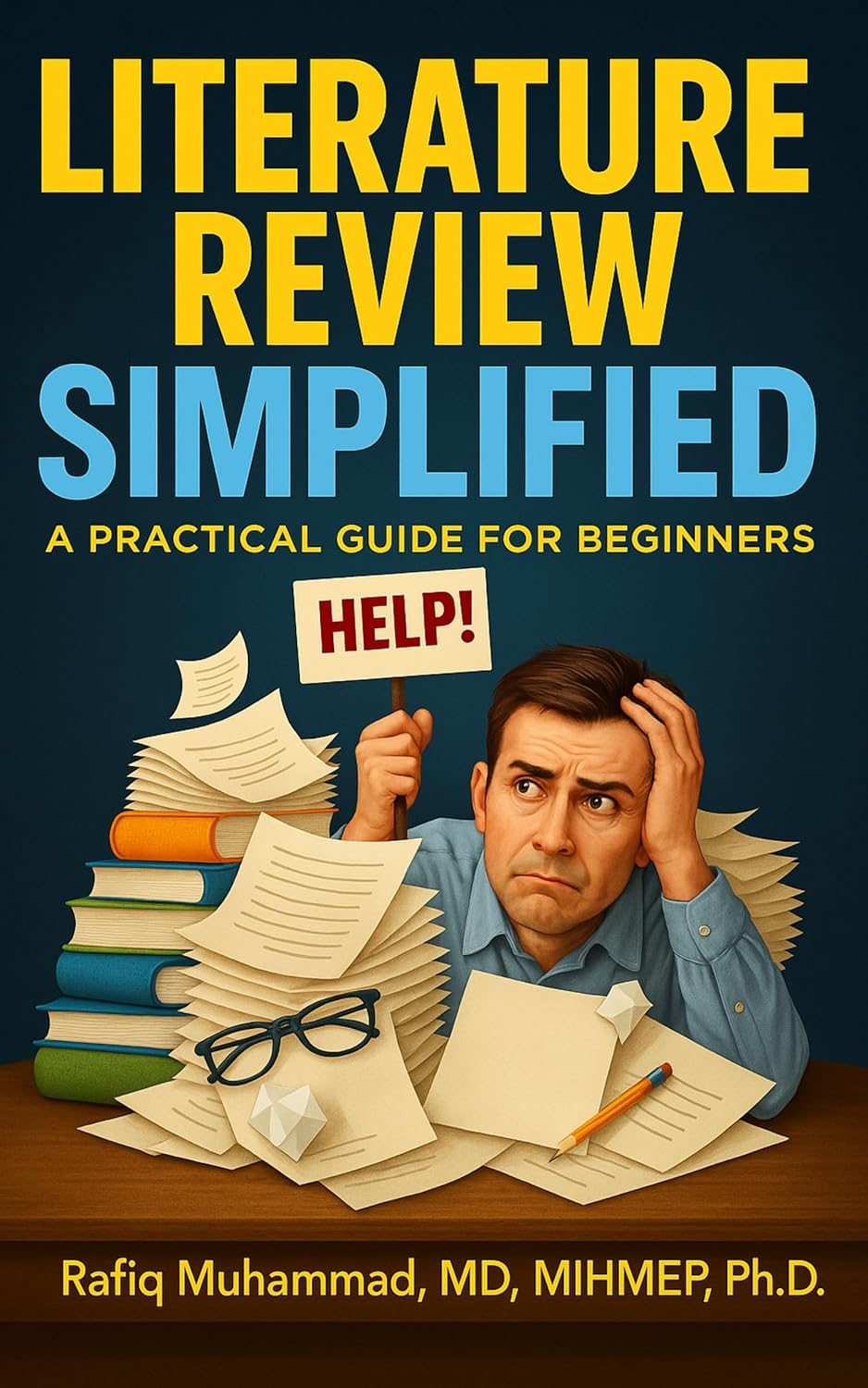Literature Review Simplified: A Practical Guide for Beginners
Literature Review Simplified (First Edition) lays the foundation for credible evidence synthesis—without the overwhelm. You’ll learn research question formulation, practical search strategy development with Boolean search operators, and smart database selection (e.g., PubMed, Scopus) to find the right studies quickly.
Move from raw results to a defensible evidence matrix using clear inclusion and exclusion criteria, source evaluation, and critical appraisal tools. Then convert notes into a polished narrative synthesis or systematic review basics: data extraction, thematic categorisation, and a reliable literature review structure. Short, focused, and ideal for tight timelines, this first edition prioritizes the essentials.
- Question design: turn topics into sharp, searchable questions.
- Search strategy: keywords, Boolean strings, and database selection (PubMed, Scopus).
- Screening workflow: inclusion/exclusion criteria, quick triage, and bias checks.
- Evidence matrix: reusable table for study details, methods, findings, and quality.
- Critical appraisal: tools and prompts to judge rigor and relevance.
- Data extraction & themes: from notes to thematic categorisation and arguments.
- Writing the chapter: proven literature review structure with model paragraph moves.
- Citation management: organise references and styles with reference management tips.
- Review timeline: a realistic plan for finishing on schedule.
Use the included checklists and templates to go from searches to a coherent, publishable chapter—fast. Perfect for first-time reviewers or anyone working within time constraints.
What’s inside
- Clear chapter-by-chapter roadmap
- Reusable templates and checklists
- Step-by-step examples from real projects
Who it’s for
- Graduate students (MA/MSc/PhD)
- Early-career researchers
- Supervisors seeking practical frameworks
What readers say
“Exactly what I needed to get unstuck.”
“Concise, rigorous, and practical.”
What you'll learn
- Proven 10‑step method with real‑world examples
- Efficient search + synthesis strategies
- Two complete sample reviews included
Frequently asked questions
Can I really complete a literature review in 4 weeks?
Yes. The 10-step method breaks the process into focused weekly goals—question design, targeted search, triage and evaluation, synthesis, structured drafting, and polish—so you avoid open-ended reading and move steadily to a finished review.
Is this book suitable for beginners?
Absolutely. It’s written for first-time reviewers (undergrad, taught master’s) and is equally useful as a refresher for thesis/dissertation writers who want a clear, repeatable process.
What’s the difference between a literature review and an annotated bibliography?
An annotated bibliography summarizes sources one by one. A literature review synthesizes them—grouping studies by themes, methods, debates, and gaps—to build an argument and justify your research direction.
Should I organize by theme or chronology?
Theme-first is recommended. Use time-order only when historical development is crucial. The book shows how to convert notes into defensible themes and sub-themes with clear transitions.
How many sources do I need?
Quality beats quantity. Programs often expect 25–80+ scholarly sources, depending on scope and level. The book shows how to define scope, avoid padding, and prioritize seminal and recent studies.
What tools do you recommend?
Start with Google Scholar/library databases; manage references with Zotero or Mendeley; use concept maps/evidence matrices to turn notes into synthesis. Links and templates are provided in the book.
How do I evaluate sources quickly and reliably?
Use triage criteria: relevance to the question, study design and rigor, sample/setting, limitations, and contribution. The method includes quick-screen checklists and note templates.
What’s a good structure for the review?
Typical flow: introduction and scope → search strategy → thematic sections (with debates/contradictions) → gap statement → implications for your study. The book includes outline templates and model paragraphs.
How do I paraphrase without plagiarizing?
Summarize claims in your own structure, attribute ideas, and cite accurately. The book includes paraphrasing moves, signal phrases, and citation patterns to maintain academic integrity.
Common mistakes to avoid?
Listing studies instead of synthesizing; unclear scope; missing recent work; weak gap statement; over-quoting; inconsistent citation style. Each is addressed with fixes and checklists.
Can this help me publish a review article?
Yes. While designed for coursework and theses, the method aligns with journal expectations for clarity, synthesis, and justification. You’ll also learn how to adapt the chapter into a publishable manuscript.
Does the book include examples and templates?
Yes—two complete sample literature reviews, plus search logs, note/synthesis templates, outline planners, and revision checklists you can reuse.
